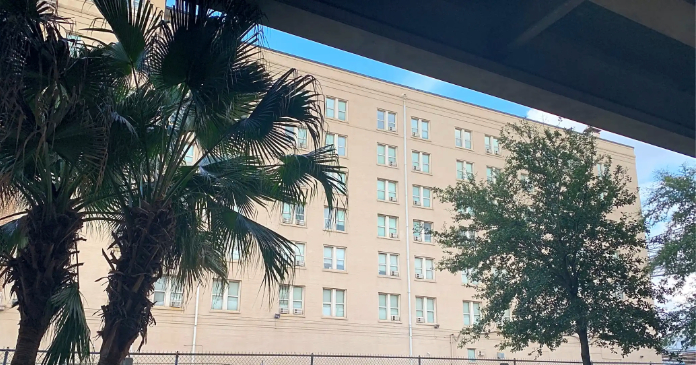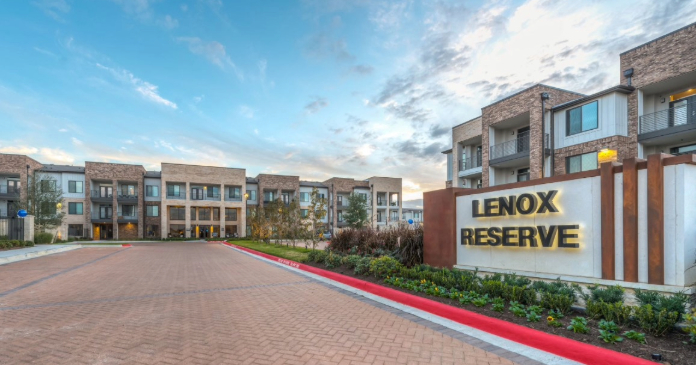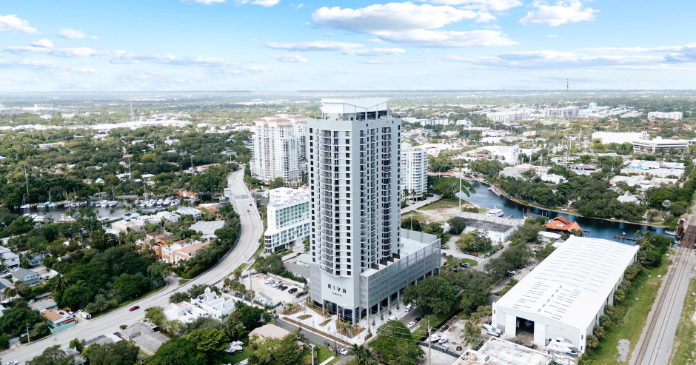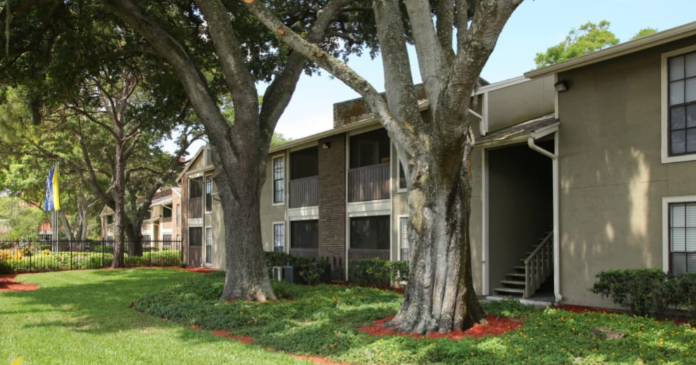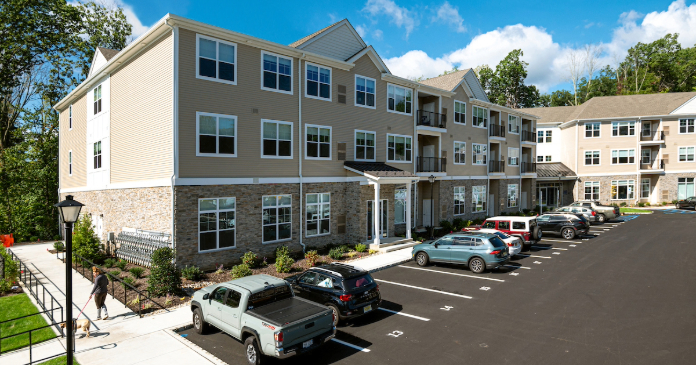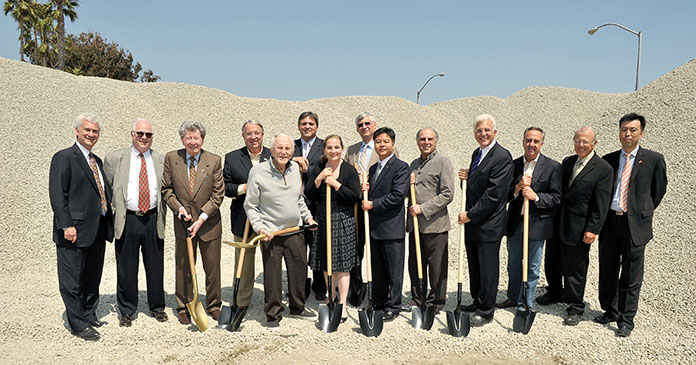
The love story began in 1955, when Epstein was first approached by then Los Angeles County Supervisor Burton Chase to assist in the planning for the creation of Marina del Rey, soon to become the largest recreational boat harbor community in the world. Less than a decade later, when construction of the marina was completed, Epstein and his partners bid successfully to build apartments, in exchange for a 60-year lease on a barren 23-acre parcel of dredged soil on the western side of the 807-acre Marina del Rey coastal community located near the center of Los Angeles’ Westside between Venice Beach and Playa del Rey, just four miles north of Los Angeles International Airport.
In the mid-1960s, Marina del Rey was developed through a then-unique public/Private partnership between the County of Los Angeles and entrepreneurial developers, including Epstein, now the only original developer of the marina still actively involved in Marina del Rey real estate. Today, Marina del Rey remains the largest single income-producing asset owned by the County of Los Angeles, and the county has embarked on an extensive program for the second-generation redevelopment of the marina.
Nearly a half century ago, seeking investors, Epstein met Kirk Douglas and approached the actor for help with financing his multifamily vision.
“I had had some other entertainment industry investors on other previous projects, but Kirk felt the marina was something that could work and he became my partner. He came up with a great deal of money—overmatching mine—and we have been partners for 47 years,” Epstein recalled recently, adding that he celebrated his 88th birthday in August and Douglas will be 94 on Dec. 9.
Together, Epstein and Douglas developed two apartment communities on 8.3 acres of the original Epstein-led leasehold, Del Rey Shores and Del Rey Shores North, the first of which opened in 1965. Those two projects consisted of 202 apartments in 31 separate buildings, each of which was a two-story, garden-style walk-up. Epstein has managed Del Rey Shores ever since.
The decision to demolish those 202 apartments and replace them with the 544-unit community now under construction was prompted by the county’s desire to spruce up the area and generate more ground rent income for the county.
In January 2001, Los Angeles County offered a proposal to extend Epstein’s ground lease from 2022 to 2063, if the Del Rey Shores partners could come to mutually acceptable terms for the redevelopment of the site to the higher density called for in the Local Coastal Plan approved by the California Coastal Commission and Los Angeles County.
Stumbling blocks
Getting there wasn’t easy, explained David O. Levine, Epstein’s chief of staff since 1987. The rugged, decade-long path to successful permitting and financing of the $165 million redevelopment project was plagued by a contentious public land use approval process, including a lawsuit filed by an adjacent condominium homeowners association, located across jurisdictional lines in the City of Los Angeles. Typical of development battles throughout the west side of Los Angeles, some opponents complained, among other things, that the redevelopment would generate excessive traffic.
The Legal Aid Foundation of Los Angeles and the Western Center on Law and Poverty, on behalf of People Organized for Westside Renewal, disputed the lack of on-site affordable housing in the development plan agreed to by the developer and the county. But, in December 2006, the county board of supervisors approved the ground lease extension and the County Regional Planning Commission approved the coastal development permit for the 544-unit project.
The Marina Strand Colony II Homeowners Association quickly filed a CEQA (California Environmental Quality Act) lawsuit to block the Shores project. In June 2008, Los Angeles County Superior Court Judge David P. Yaffe rejected most of the arguments advanced by the condominium HOA, but still ordered the County of Los Angeles and Del Rey Shores to redo a section of the project’s environmental impact report (EIR), claiming the lack of disclosure of the amount of soil to be exported during construction was a substantial issue that had not been properly addressed in the draft EIR.
As a result, between July 2008 and December 2008, the County of Los Angeles and the Shores team worked on an addendum to the final EIR that dealt specifically with the amount of soil to be exported during construction of Shores and the route that would be used to remove the soil from the site.
In January 2009, the Los Angeles County Board of Supervisors approved a second coastal development permit for the project that included all of the first coastal development permit approved in December 2006 and the special addendum dealing with soil removal.
In late April 2009, the California Court of Appeals dismissed the lawsuit filed by the Marina Strand Colony II Homeowners Association appealing the first coastal development permit. The association had filed an appeal of that permit but, because the second coastal development permit was approved in the spring of 2009, the state court dismissed the appeal against the first permit, ruling that the appeal was moot because the second coastal development superseded the first one.
While final entitlements for Shores had been received from the county in early 2009, it wasn’t until the state court of appeals dismissed the appeal of the Marina Strand Colony II Homeowners Association in late April 2009, that Epstein and his partners could proceed with financing of the project.
“So, here we are in May of 2009 and the project is finally litigation free. Difficult as the litigation was, the most substantial hurdle that we faced was the effort to identify financing for the project in the late spring of 2009, when the economy was at its nadir,” said Levine.
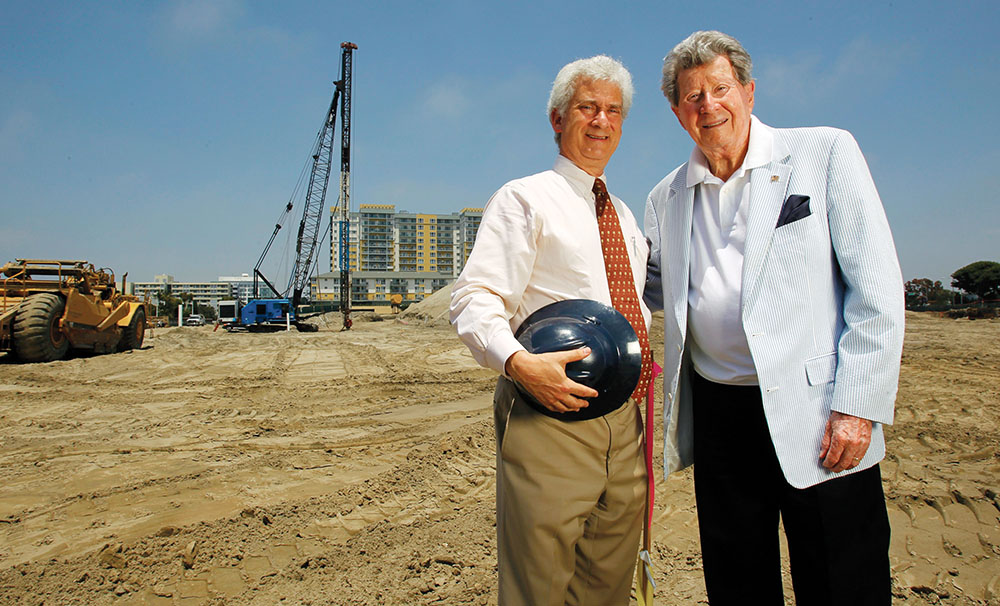
Financing hurdles
Conventional construction financing—so readily available two years before—had disappeared in the meltdown of the American real estate economy between 2007 and 2009. So, beginning in May 2009, the developer began to explore different financing options, with the goal of breaking ground prior to the expiration of Shores’ coastal development permit, as well as the Los Angeles County building plan check approvals for the marina project. Also, because of the declining number of years remaining on the county ground lease, Epstein didn’t have the luxury of waiting until the economy revitalized.
He and Levine ultimately considered the possibility of establishment of a joint venture with more than 100 potential sources of equity, ranging from stock-exchange-listed real estate investment trusts to private real estate development groups from around the country and Canada.
It was then that Epstein was approached by long-time friend David Goodman, chairman of Red Mortgage Capital Group LLC, who asked the developer to consider the potential of construction financing through a Federal Housing and Urban Development Department program referred to as a HUD Section 221(d)(4) structure. In May 2010, the partners of Del Rey Shores LLC-the Epstein family and an investment vehicle created by the family of Kirk Douglas- inked a 50-50 partnership with Guardian Life Insurance Company of America, one of the largest mutual life insurers in the country and an active investor in commercial mortgages and real estate equity, which together agreed to provide equity financing of close to $40 million to close the financing gap.
The first project meeting between Red Capital, Del Rey Shores LLC, the County of Los Angeles and the Los Angeles HUD office was held in June 2010 and the groundbreaking ceremony for the community took place last June, after the demolition of the original Del Rey Shores apartments was finished.
“The process with HUD was projected by many to take no less than a minimum of 12 to 15 months, but through the herculean efforts of Red Capital and the County of Los Angeles and HUD, we were able to get through the HUD process and close the transaction on March 3, 2011, about eight months later,” recalled Levine.
The new Shores community is being financed, in large part, by $125 million of non-recourse construction and permanent financing provided by Red Mortgage Capital LLC, the mortgage banking arm of comprehensive capital provider Red Capital Group, through the HUD section 221(d)(4) program.
“Shores is the largest FHA-insured project in the history of HUD and our success is critical to the success of the County of Los Angles’ second-generation redevelopment of Marina del Rey,” said Levine of the deal that represents the largest FHA Section 221(d)(4) unsubsidized loan ever insured by the Los Angeles HUD office and the largest non-subsidized FHA-insured, 221(d)(4) loan ever done in the country.
Marina del Rey is the largest single income-producing asset owned by the County of Los Angeles, contributing $40 million every year to the county’s coffers. Those funds are used not only to support the community and the beaches that are managed by the County of Los Angeles, but, also, more than 50 percent of the ground rent generated by the leaseholds in Marina del Rey supports the county-funded social service safety net.
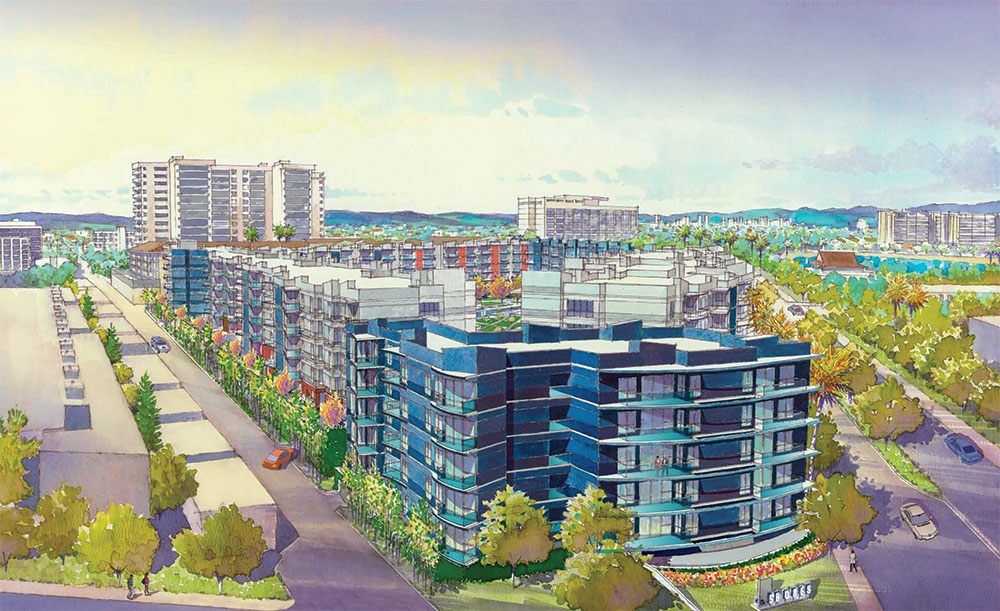
The Shores redevelopment project has the potential to create 950 construction jobs and will have a positive impact to the Los Angeles County economy of around $170 million.
Epstein actively leads the development team, which began the demolition process just five days after the transaction closed. Shores will consist of 12 five-story, woodframe and stucco buildings above two-story concrete podium parking with a central courtyard of nearly two acres. Apartments on the outside of the project will have views of the Pacific Ocean to the west and Marina del Rey’s main channel to the east for at least three of the five stories. Interior units will face a two-acre courtyard that will provide residents with a wide range of recreational amenities amidst park-like landscaping.
Construction of all 12 buildings is underway and in varying stages of completion. “We hope to open the first 170 of the 544 units no later than March 2013,” Levine said, adding that the entire project should be finished by June 2013.
Shores will consist of 50 percent one-bedroom and 50 percent two-bedroom units with an average size of 992 sq. ft. and a rental range for the ones of $2,000 to $2,800 and $2,500 to $3,800 for the two-bedroom units. Other amenities include large patios or balconies and washers and dryers in every unit.
At the heart of the 8.3-acre enclave is a landscaped, park-like courtyard, where residents can gather around the community’s fire pits, socialize in the barbecue and eating areas and work off those outdoor feasts in the lap lanes in the community’s swimming pool. Community amenities also will include private parking in a gated garage, two rooftop lounges and a fitness center featuring an exercise studio and locker rooms for residents of the upscale community, all designed to meet the needs of its target tenants—Echo Boomers and their empty-nest parents, who are, Levine said, “seeking to enjoy the active and casual lifestyle, which attracts them to Marina del Rey and the Venice community and Pacific Ocean.”
Nadel Residential Architects is the architectural firm for the project and the general contractor is a joint venture of Huntington Beach-based American Multifamily Inc. and the Texas-based subsidiary of Beijing Construction Company, BCEGZ-USA.
The Jerry B. Epstein Management Company will oversee day-to-day operations of Shores.
When the permitting process finally was complete and the loan closed, Epstein said, he called his wife and invited her to go on a picnic. “I got some sandwiches and soft drinks and drove her out to the marina and onto our site. I told her that we had just received our loan, that it had closed, and it was 47 years later and we were starting all over again.”
Author Peggy Shaw










